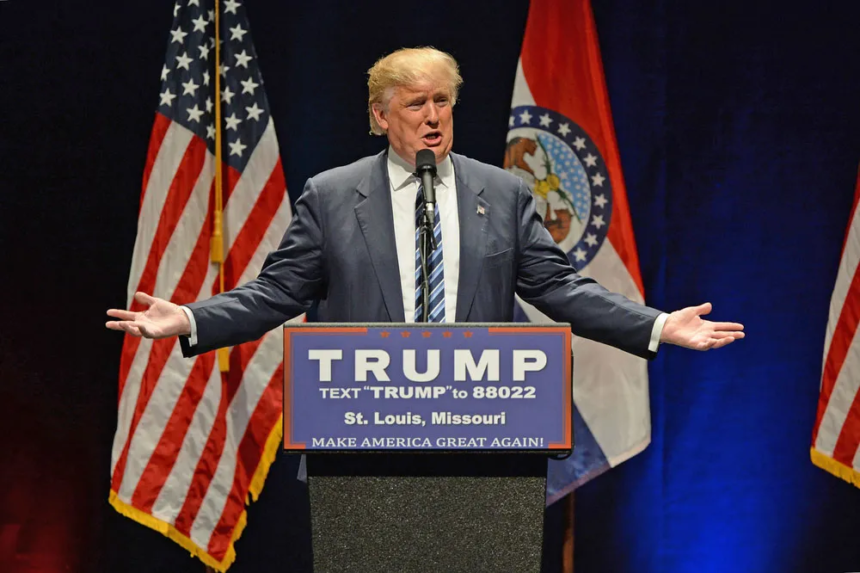In a shift from recent rhetoric, US President Donald Trump on Tuesday indicated that tariffs on Chinese imports may be reduced and emphasized that he has “no intention” of firing Federal Reserve Chairman Jerome Powell, despite weeks of sharp criticism.
Tariffs May ‘Come Down Substantially’
Speaking from the Oval Office, Trump stated that while he doesn’t plan to eliminate tariffs entirely, the current levels—some as high as 145% on Chinese goods—could “come down substantially.” The potential softening comes amid growing concerns about inflation, trade disruption, and market volatility stemming from the ongoing US-China trade war.
“I’ll be very nice in the negotiations,” Trump told reporters, adding that he hoped to reach a trade agreement with China in the near future. The comments follow reports that Treasury Secretary Scott Bessent described the current tariff climate as “unsustainable.”

Support for Powell—With a Caveat
President Trump also addressed speculation over whether he intended to dismiss Fed Chair Jerome Powell, saying: “I have no intention of firing him.” Still, he criticized Powell for being slow on rate cuts, saying he’d like to see “a little more activity” from the central bank in reducing interest rates to spur economic growth.
The remarks come after Trump called Powell “a major loser” last week, causing a brief selloff across US markets. Markets rebounded Tuesday following Trump’s more conciliatory tone, with the S&P 500 rising 2.5% and the Nasdaq gaining 2.7%.
Global Market Reaction
Trump’s softened stance was welcomed by investors. Major Asian indices responded positively, with Japan’s Nikkei 225 up 1.9% and Hong Kong’s Hang Seng climbing 2.2%. However, China’s Shanghai Composite saw little change, reflecting ongoing caution in Beijing.
Futures markets also ticked up in overnight trading, reflecting optimism that easing trade tensions could support a rebound in global markets after weeks of volatility.
IMF Cuts US Growth Forecast
The International Monetary Fund (IMF) on Tuesday issued a significant downgrade to the US economic outlook, citing tariff uncertainty as a primary factor. The Fund warned of a “significant slowdown” in global growth, with the US facing the largest forecast cut among developed nations.
Tariff Totals Keep Rising
The Trump administration has slapped escalating taxes on Chinese imports, with some levies reaching 245% when new rates are combined with existing ones. Beijing has retaliated with tariffs as high as 125% on US products, sparking a tit-for-tat standoff that shows no signs of resolving quickly.
Though the Chinese government has yet to officially respond to Trump’s latest comments, the state-backed Global Times published analysis suggesting the US was beginning to realize that its aggressive tariff strategy might be backfiring economically.
Can Trump Fire Powell?
While Trump has floated the idea of dismissing Powell, it’s unclear whether he has the legal authority to do so. The Fed chair, first appointed by Trump in 2017 and later reappointed by President Biden in 2021, serves a four-year term that is meant to protect the institution’s independence.
National Economic Council Director Kevin Hassett said last week that the White House was exploring legal options, but no US president has ever attempted to fire a Fed chair.
What’s Next?
With inflation concerns mounting and trade uncertainty rattling markets, Trump’s latest remarks suggest a shift toward de-escalation—both with China and the Federal Reserve. However, as tensions simmer and economic forecasts dim, investors and policymakers alike will be watching closely to see whether the president’s tone turns into policy change.
Category: US Politics, Global Economy, Trade and Tariffs, Central Banking, Financial Markets
Tags: Donald Trump, China trade war, Jerome Powell, US Federal Reserve, interest rates, US tariffs, global markets, economic growth forecast, IMF downgrade, stock market, Trump Powell feud









